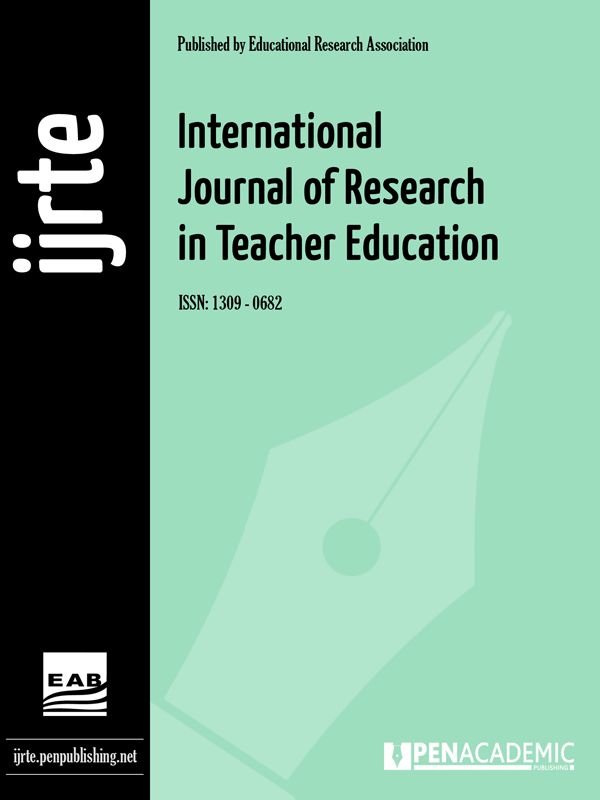Research article | Open Access
International Journal of Research in Teacher Education 2018, Vol. 9(1) 34-44
Scaffolding Based On Learning Style As An Effort To Increase Mathematical Creative Thinking Skill
pp. 34 - 44
Publish Date: March 31, 2018 | Single/Total View: 363/954 | Single/Total Download: 426/1.850
Abstract
This article describes the ability of mathematical creative thinking and scaffolding process of pre-service teachers according to the learning styles. The research design used qualitative triangulation. The subject was 50 first year students of Elementary School Pre-service Teacher in Satya Wacana Christian University who were taking Basic Mathematics Concept course. Research data was taken through tests and interviews. The result of this study indicates that the subjects have different creative thinking abilities which were seen from their learning styles. Two aspects of them that were still low were flexibility and originality. The lack of love of mathematics was one of the reasons why mathematical creative thinking ability was still low. Scaffolding according to the subject's learning styles could improve the ability of mathematical creative thinking. The technique and duration of the scaffolding process depend on the learning styles and the subject's ability to follow the scaffolding process. The scaffolding process should be done according to the subject's response and needs according to their learning styles. Although they have different learning styles, scaffolding process can be done successfully with the use of media, either in the form of props and simulation drawings.
Keywords: creative thinking; scaffolding; mathematic; pre-service teacher
APA 7th edition
Wahyudi, W., Waluya, S.B., & Rochmad, R. (2018). Scaffolding Based On Learning Style As An Effort To Increase Mathematical Creative Thinking Skill. International Journal of Research in Teacher Education, 9(1), 34-44.
Harvard
Wahyudi, W., Waluya, S. and Rochmad, R. (2018). Scaffolding Based On Learning Style As An Effort To Increase Mathematical Creative Thinking Skill. International Journal of Research in Teacher Education, 9(1), pp. 34-44.
Chicago 16th edition
Wahyudi, Wahyudi, St. Budi Waluya and Rochmad Rochmad (2018). "Scaffolding Based On Learning Style As An Effort To Increase Mathematical Creative Thinking Skill". International Journal of Research in Teacher Education 9 (1):34-44.
Akhtar, M. (2014). Patterns Of Scaffolding in One-to-One Mathematics Teaching: An Analysis. Educational Research International, 3/1, 71-79.
Anne J.; Roberta N., & Clive B. (2004). Scaffolding students: Suggestions on How to Equip Students With the Necessary Study Skills For Studying in A Blended Learning Environment. Journal of Educational Media, 85-96, doi:10.1080/1358165042000253267
Best, B., & Thomas, W. (2007). The Creative Teaching and Learning Toolkit. NewYork: Continuum International Publishing Group.
Bire, A. L.; Garadus, U., & Bire, J. (2014). Pengaruh gaya belajar visual, auditorial, dan kinestetik terhadap prestasi belajar siswa. Jurnal Kependidikan, 44/2, 169-176.
Bikmaz, F. H. at al. Scaffolding Strategies Applied by Student Teachers to Teach Mathematics. The International Journal of Research in Teacher Education 1, Special Issue. pp. 25-36. ISSN: 1308-951X
Dennen, V. P. (2004). Cognitive Apprenticeship in Educational Practice: Research on Scaffolding, Modeling, Mentoring, and Coaching as Instructional Strategies. In D. H. Jonassen (Ed.), Handbook of Research on Educational Communications and Technology (2nd ed., 813-828). Mahwah, NJ: Lawrence Erlbaum Associates.
DePorter, B.; Mark, R., & Sarah, S. (2014). Quantum Teaching. Bandung: PT Mizan Pustaka.
Dyers, J. H. at al. (2011). Innovators DNA: Mastering the Five Skills of Disruptive Innovators. Harvard: Business Review.
Holton, D., & Clarke, D. (2006). Scaffolding and metacognition. International Journal of Mathematical Education in Science and Technology, 37/2, 127-143.
Jelfs, A.; Nathan, R., & Barrett, C. (2004). Scaffolding students: Suggestions on how to equip students with the necessary skills for studying in a blended learning environment. Journal of Educational Media, 29/2, 85-95.
Lajoie, S. P. (2005). Extending the scaffolding metaphor. Instructional Science, 33/5-6, 541-557.
Lakkala, M.; Muukkonen, H., & Hakkarainen, K. (2005). Patterns of scaffolding in computer-mediated collaborative
Lange, V. L. (2002). Instructional scaffolding. Retrieved July 13, 2017 from http://condor.admin.ccny.cuny.edu/~group4/Cano/Cano%20Paper.doc.
Mann, E. L. (2005). Mathematical Creativity and School Mathematics: Indicators of Mathematical Creativity in Middle School Students. Connecticut: University of Connecticut.
Mairing, J. P. (2016). Kemampuan Siswa Kelas VIII Dalam Memecahkan Masalah Matematika Berdasarkan Tingkat Akreditasi. Jurnal Kependidikan, 46/2, 179-192.
McGregor, D. (2007). Developing Thinking; Developing Learning A Guide to Thinking Skills in education. NewYork: Open University Press McGraw-Hill Education.
McNeill, K. L.; Lizotte, D. J., & Krajcik, J. (2006). Supporting students‘ construction of scientific explanations by fading scaffolds in instructional materials. The Journal of The Learning Sciences, 15/2, 153–191.
Nathan, M. J., & Koedinger, K. R. (2000). Teachers and researchers beliefs about the development of algebraic reasoning. Journal for Research in Mathematics Education, 31/2, 168-190.
Nindiasari, H. at al. (2016). Desain Didaktis Tahapan Kemampuan Dan Disposisi Berpikir Reflektif Matematis Berdasarkan Gaya Belajar. Jurnal Kependidikan, 46/2, 219-232.
Ormond, C. A. (2016). Scaffolding the Mathematical “Connections”: A New Approach to Preparting Teachers for the Teaching of Lower Secondary Algebra. Australian Journal of Teacher Education, 122-164, http://dx.doi.org/10.14221/ajte.2016v41n6.8
Sriwongchai; Arunee; Nirat, J., & Sumalee C. (2015). Developing the Mathematics Learning Management Moderl for Improving Creative Thinking in Thailand. International Education Studies, 8/11.
Sternberg, R. J. (2005). Creativity or creativities. Int. J. Human-Computer Studies, 63, 370-382.
Sternberg, R. J. (2006). The Nature of Creativity. Creativity Research Journal, 18/1, 87-98.
Torrance, E. P. (1995). The beyonders’ in why fly? A philosophy of creativity. Norwood, NJ: Ablex.
Vale, I., & Barbosa, A. (2015). Mathematics Creativity in Elementary Teacher Training. Journal of the European Teacher Education Network, 10, 101-109.
Vygotsky, L. S. (1978). Mind in society: The development of higher psychological processes. In M.Cole, V. John-Steiner, S. Scribner & E. Souberman, (Eds.), Cambridge: Harvard University Press.
Williams, L. (2008). Tiering and scaffolding: Two strategies for providing access to important mathematics. Teaching Children Mathematics, 14/6, 324-330.
